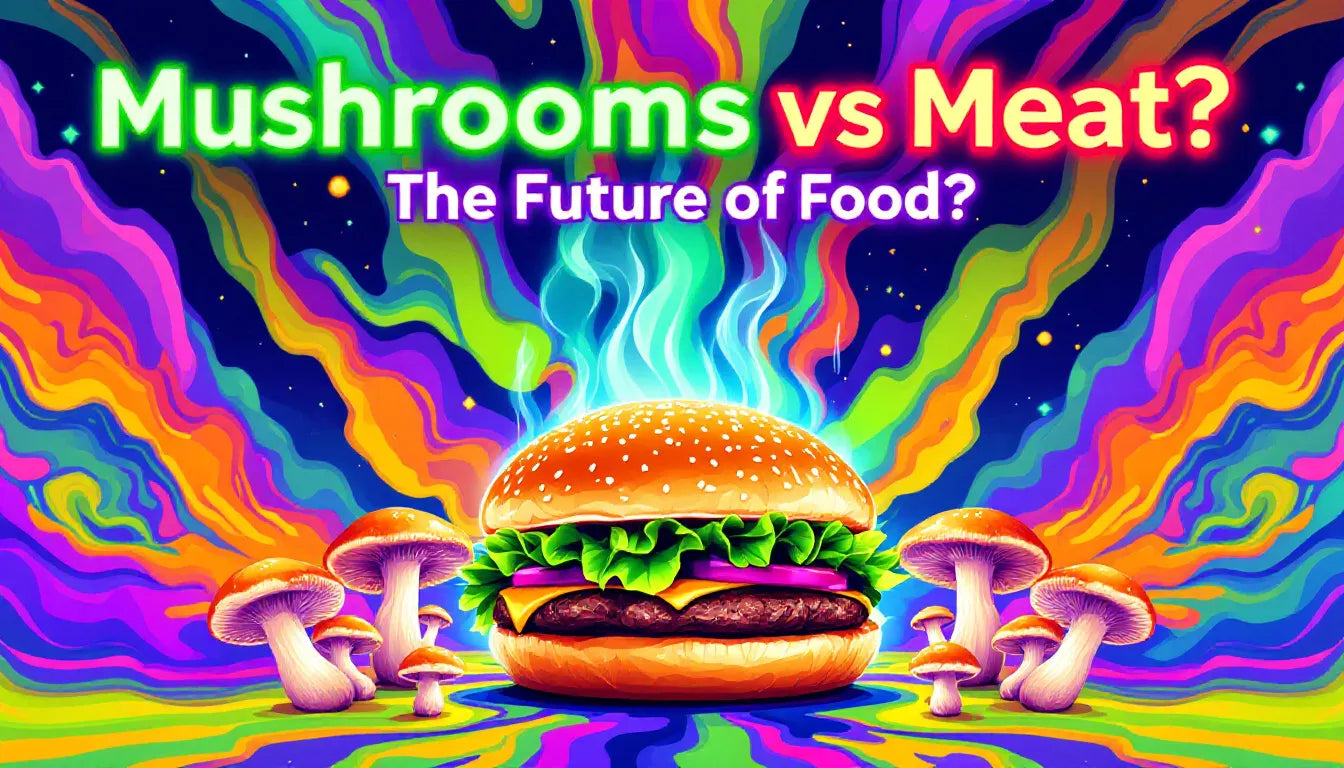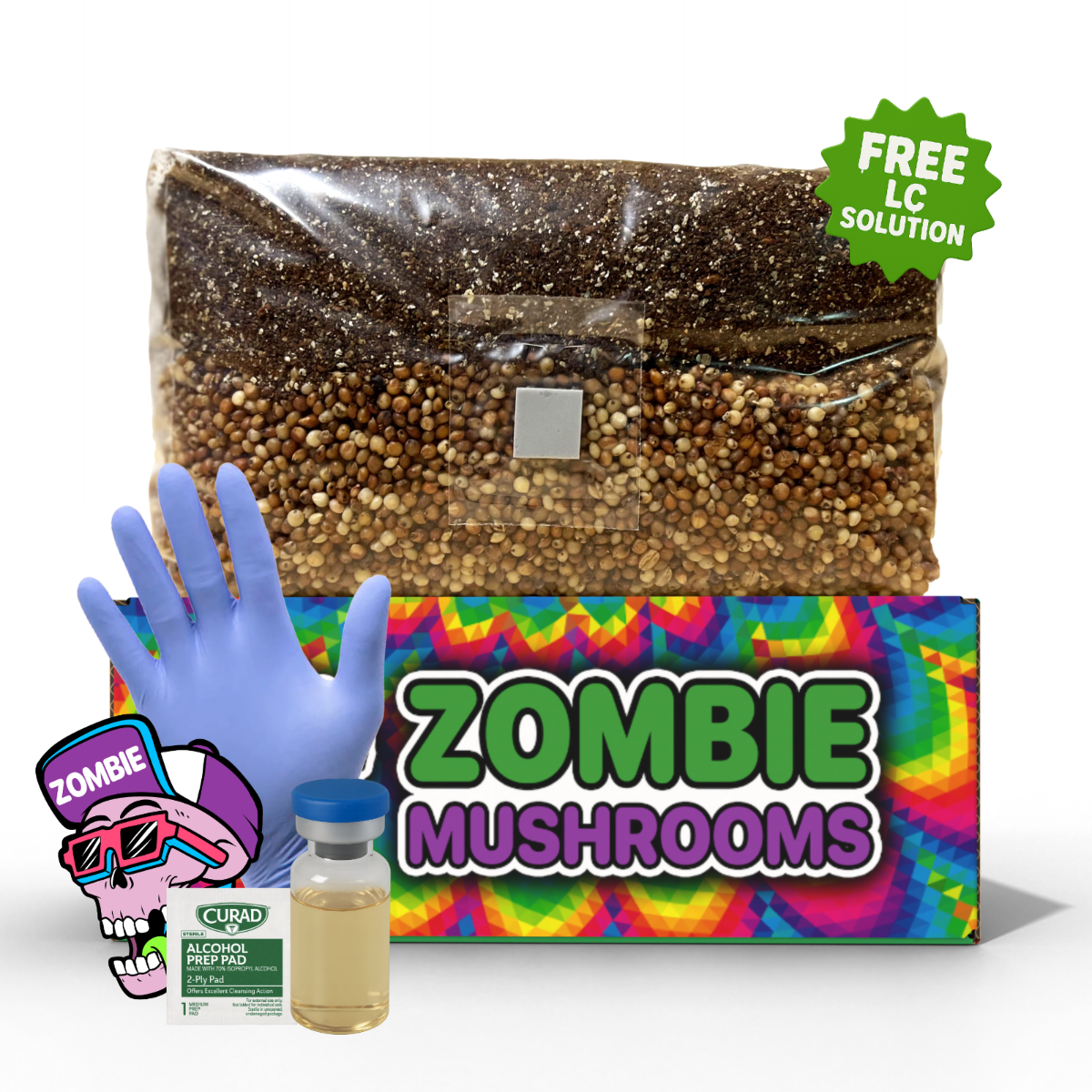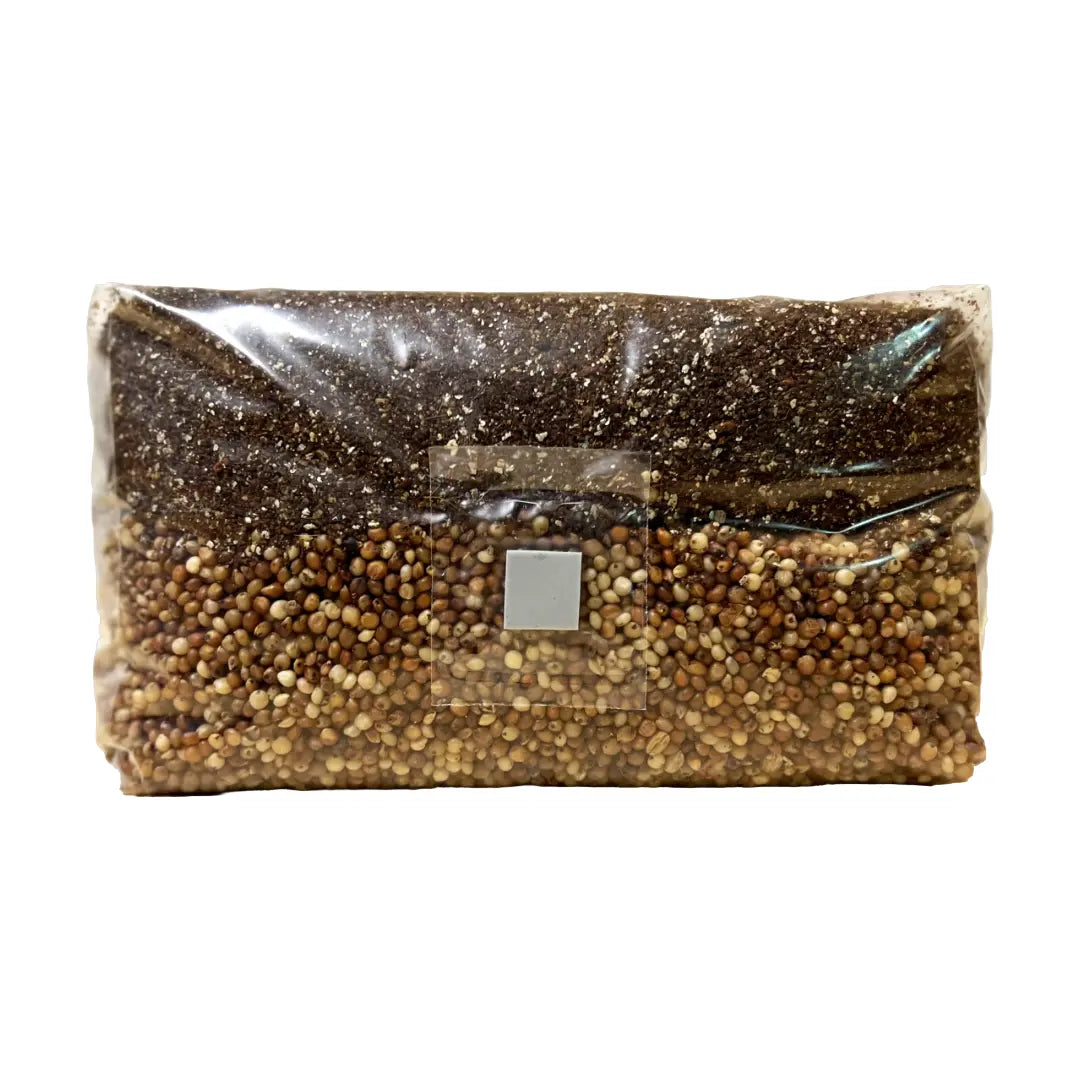- 🌱 Mushroom farming requires significantly less water, land, and energy than traditional livestock farming.
- 🌍 Mycoprotein production generates fewer greenhouse gas emissions compared to beef and poultry.
- 🍄 Mushrooms naturally contain umami flavors, making them a popular ingredient in plant-based meats.
- 💪 Mycoprotein offers all essential amino acids, making it a complete plant-based protein.
- 🔬 Innovations like fermentation and hybrid plant-mushroom meats are advancing the industry.

Are Mushrooms a Sustainable Meat Alternative?
As demand for sustainable meat alternatives rises, mushrooms and mycoprotein are gaining attention for their environmental and nutritional benefits. Compared to traditional livestock, mushroom farming requires fewer resources and produces fewer greenhouse gas emissions. This article explores how mushrooms fit into the plant-based protein movement, their sustainability profile, and their potential future in the food industry. For anyone inspired to take part at home, our grow bags make sustainable mushroom cultivation simple and accessible, letting you grow fresh protein-rich mushrooms right in your kitchen.

The Rise of Plant-Based Meats and Where Mushrooms Fit In
Plant-based meats have evolved significantly over time, from ancient tofu and seitan to modern alternatives made from soy, pea protein, and other plant sources. Consumers are increasingly choosing these products due to ethical concerns, health benefits, and their lower environmental impact.
Mushrooms have emerged as a key player in meat alternatives due to their naturally meaty texture, rich umami taste, and nutritional benefits. They can be used as a whole-food meat substitute or processed into more refined products like mycoprotein. This fungal-based protein is cultivated through fermentation and crafted to mimic the texture and structure of real meat more convincingly than many traditional plant proteins.

Why Are Mushrooms Considered a Sustainable Meat Alternative?
Mushrooms offer several environmental advantages over conventional animal agriculture. Their low resource requirements, reduced emissions, and efficient growing methods make them one of the most sustainable meat alternatives.
1. Low Resource Consumption
Raising livestock requires vast amounts of water, land, and feed. In contrast, mushroom farming is highly efficient. Studies show that mushroom cultivation uses significantly less water than beef, poultry, or pork production. Additionally, mushrooms grow on organic waste materials like sawdust or agricultural byproducts, reducing the burden on global food systems.

2. Reduced Carbon Footprint
Animal agriculture is one of the largest contributors to greenhouse gas emissions. The methane produced by cattle alone is a major driver of climate change. Mushroom farming, however, has a much lower carbon footprint. Research indicates that mushroom production results in far fewer emissions compared to beef and other meats, making it a more sustainable option for protein consumption.
3. Efficient Growth Process
Livestock farming requires multiple years to raise an animal for slaughter. In contrast, mushrooms grow rapidly—many varieties can be harvested within a few weeks. Additionally, they can thrive in controlled environments, eliminating the need for deforestation or large-scale land clearance. This efficiency helps reduce environmental damage while providing a high-yield food source.
Understanding Mycoprotein: The Science Behind Fungal-Based Meat Substitutes
Mycoprotein is derived from filamentous fungi, primarily Fusarium venenatum, and cultivated through a controlled fermentation process. This method results in a fibrous, high-protein product that closely resembles the texture of meat. Unlike whole mushrooms, which are typically used in their natural form, mycoprotein can be formulated into a variety of meat-like products, such as nuggets, burgers, and fillets.
One major advantage of mycoprotein is its ability to be engineered with specific textures and flavors, making it an appealing alternative to traditional meats. Brands like Quorn have built entire product lines around this fungal-based protein, demonstrating its commercial viability and popularity among consumers.

Environmental Impact of Mycoprotein Products Compared to Traditional Meat
Comparing mycoprotein to conventional meat highlights several sustainability benefits.
1. Water Usage
A significant issue with animal agriculture is its intensive water consumption. Beef production, for example, requires thousands of gallons of water per pound of meat. In contrast, mycoprotein production requires minimal water, making it a more sustainable protein source.
2. Land Use Efficiency
Traditional livestock farming demands large pastures, grazing lands, and crop production for feed, contributing to deforestation and ecosystem destruction. Mycoprotein, however, is cultivated in controlled fermentation facilities that require minimal land. This allows for a more sustainable food system with less habitat loss.
3. Waste Management and Circular Economy
Mycoprotein production integrates efficiently into a circular economy model. It can be cultivated using agricultural byproducts and organic waste materials, minimizing food waste while maximizing sustainability. This ability to repurpose materials that would otherwise be discarded makes fungal-based proteins highly attractive for eco-conscious food production.

Nutritional Benefits of Mushroom-Based Meat Substitutes
Beyond environmental benefits, mushrooms and mycoprotein offer impressive nutritional advantages.
1. High-Quality Plant-Based Protein
One of the key benefits of mycoprotein is its complete protein profile, containing all essential amino acids. This makes it a superior plant-based protein option, especially for individuals looking to replace meat in their diet.
2. Rich in Vitamins and Minerals
Mushrooms are naturally packed with nutrients such as B vitamins (B2, B3, B5), selenium, and antioxidants, all essential for good health. Mycoprotein-based products are also high in fiber and beneficial bioactive compounds that support digestion and cardiovascular health.
3. Low in Unhealthy Fats
Unlike animal-based proteins, mushroom-based alternatives are naturally low in unhealthy saturated fats and contain no cholesterol. This makes them a heart-healthy option suitable for individuals managing cholesterol levels or seeking a balanced diet.

Flavor and Culinary Applications of Mycoprotein Products
Mushrooms have long been favored in plant-based cooking due to their deep, umami-rich flavor profile. Their fiber structure also mimics certain meat textures, making them an excellent alternative for various dishes.
1. Popular Culinary Uses
Mushroom-based protein can be used in a wide variety of meals, including:
- Burger patties and sausages: Mycoprotein can be shaped and seasoned to mimic classic beef textures.
- Stir-fries and hearty stews: Mushrooms absorb flavors well, making them a great addition to rich, savory dishes.
- Meat alternatives for tacos and pasta: Finely chopped mushrooms or mycoprotein crumbles serve as excellent substitutes for ground beef.
2. How Mycoprotein Enhances Recipes
The fibrous texture of mycoprotein creates a meat-like mouthfeel, making it more convincing as a meat substitute. Additionally, mushrooms and fungal-based meats blend well with various herbs and spices, allowing them to take on traditional meat flavors when cooked.

Challenges and Limitations of Mushroom-Based Meat Alternatives
Despite their sustainability and nutritional benefits, mushroom-based meat alternatives still face certain challenges.
1. Scalability Concerns
While mycoprotein and mushroom farming have lower environmental impacts, expanding production on a global scale remains a challenge. Investments in fungal protein technology are required to meet the growing demand for sustainable meat substitutes.
2. Allergy Risks
Some individuals may have allergic reactions to fungi-based proteins, limiting the accessibility of mycoprotein to a broader population. Manufacturers must address these potential allergens when developing new products.
3. Consumer Perception
Despite growing awareness of sustainable proteins, some consumers still prefer traditional plant-based sources like soy or pea protein over mycoprotein. Increasing education and marketing efforts will be essential for further adoption.

Innovations and the Future of Mushrooms as a Meat Replacement
The future of mushroom-based proteins is promising, with ongoing advancements shaping the next generation of sustainable foods.
1. Advanced Fermentation Techniques
Researchers are working on improving fermentation methods to enhance mycoprotein’s texture and flavor, making it an even more appealing meat substitute.
2. Hybrid Plant-Mushroom Meats
New food innovations combine mushrooms with other plant proteins to create superior, meat-like products that better mimic the structure of traditional meats.
3. Market Growth and Consumer Adoption
As demand for sustainable meat alternatives grows, more companies are investing in fungal protein technologies, expanding accessibility and affordability for mainstream consumers.
Mushrooms and mycoprotein present a highly sustainable, nutritious, and versatile alternative to conventional meat. Their low environmental footprint, combined with high protein content and culinary adaptability, makes them increasingly important in the future of food. As fermentation technology advances and consumer preferences shift, mushroom-based meats will continue to gain momentum as a go-to substitute for ethical, sustainable, and delicious eating.
FAQs
How do mushrooms compare to traditional meat in terms of sustainability?
Mushrooms require significantly fewer resources, produce lower carbon emissions, and use less water than traditional meat.
What is the history of plant-based meat and where do mushrooms fit in?
Plant-based meats have evolved from soy and seitan to modern innovations like mycoprotein, with mushrooms gaining popularity due to their texture and sustainability.
What are the environmental benefits of mycoprotein products?
Mycoprotein production uses less water, land, and energy than livestock farming while generating fewer greenhouse gases.
How do mycoprotein and mushroom-based meats compare nutritionally and in taste?
They are rich in protein, fiber, and essential nutrients while offering a naturally umami-rich, meat-like texture.
What innovations are shaping the future of mushrooms as a meat replacement?
Advanced fermentation, hybrid meat alternatives, and growing consumer demand are pushing mushroom-based proteins forward.
Citations
- Derbyshire, E., & Delange, J. (2020). The health benefits of mycoprotein as a meat alternative: A review. Nutrients, 12(2), 291.
- Reed, P., Binns, F., & Jones, M. (2021). Analyzing the environmental impact of fungal-based meat substitutes. Journal of Sustainable Food Systems, 5(1), 45-58.
- Röös, E., Sundberg, C., Hansson, P. A., & Lannerstad, M. (2017). Can mushrooms help reduce environmental impact? Agricultural Systems, 156, 141-150.
- Saaroni, A., Bloemhof, S., & Gaillard, S. (2022). Comparing carbon footprints of fungal-based proteins and conventional meat. Environmental Science & Technology, 56(4), 2351-2362.
If you're looking for a sustainable, nutritious, and delicious alternative to meat, mushrooms and mycoprotein might be the perfect solution. Start experimenting with these eco-friendly alternatives in your kitchen today!



